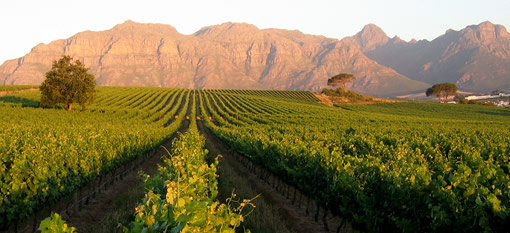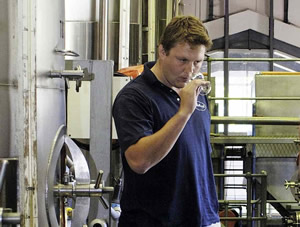South African Chenin Blanc received quite a bit of criticism over the last couple of months. A New York Times aricle in particular bashed some of the countries top Chenin producers, calling the wines flabby and dispiriting. For them the wines lacked the signature floral, mineral and citrus aromas and flavors of Chenin Blanc along with it’s signature hallmark: great acidity. One panel member even went as far as saying: ‘“The grape is not being celebrated here, these have veered into a drink, rather than a wine.”
Chenin Blanc has long been widely planted in South Africa, encompassing twice as many acres as in the Loire. A few year’s ago the same New York Times panel referred to South African Chenins as ”wines of freshness and character with prices that make them exceptional values.” Is this still the case? Will the grape revive itself to its formal glory and become THE varietal for South Africa?
These statements all came to mind at a recent vertical tasting, hosted by one of South Africa’s most acclaimed Chenin Blanc producers, Kleine Zalze. Winemaker Berto van der Westhuizen presented 5 vintages, dating back to 2005, from the Kleine Zalze Cellar Selection range over a lunch held at Haiku, one of Cape Town’s top Asian restaurants.
The aim of the tasting was to showcase the potential of Chenin Blanc in South Africa. According to Kleine Zalze’s marketing manager Wynand van Schalkwyk, South Africa still has a long way to go before claiming the grape as the country’s star varietal. On the bright side however, more and more locally produced Chenins are making waves in the International market, such as the 2009 Kleine Zalze Cellar Selection Chenin Blanc, which walked away with top accolades at the 2012 European Sommelier Awards.
During the tasting it became clear that the styles of the Kleine Zalze Chenin Blancs have changed quite a bit over the years. We discovered massive style difference between the 2005/2006 and the 2009/2010/2011 vintages. This is large due to the weather patterns which have change dramatically over the years.
The 2011 harvest for instance could be described as a “vintage of physiological ripeness” according to Bertho. This can be called the perfect vintage, because of the early ripening of the grapes. The rainfall was also much less than earlier vintages. The result was high varietal expression with a distinctive green tint of the juice, all of which helped with the creation of the fresh flavours of the Chenin Blanc. The 2009 offers hints of honey on the nose and worked amazingly well with the BBQ Duck Springrolls served with it. Both the 2010 and 2011 vintages express nice acidity and leave a lean and clean taste on the palate.
During the 2005 and 2006 harvest, botrytis occurred due to higher rainfall and this made the wines much more richer and aromatic. Both are slightly sweeter on the palate, compared to the younger vintages, with prominent aromas on the nose.
Personally, I prefer the older vintages, but that’s just the style I enjoy. They are much more serious and bold and kept their age exceptionally well. Whether the younger vintages will stand the test of time, that we’ll have to wait and see. They are definitely more accessible and consumer friendly compared to its predecessors.
None of Kleine Zalze’s Chenin Blancs were reviewed by the New York Times panel. This is a pity, as it would have been interesting to see how their younger vintages compared to those who got a hiding. I believe the panel would have enjoyed the Chenin Blancs from Kleine Zalze, as all three wines offer great freshness and character with prices that make them exceptional values.





